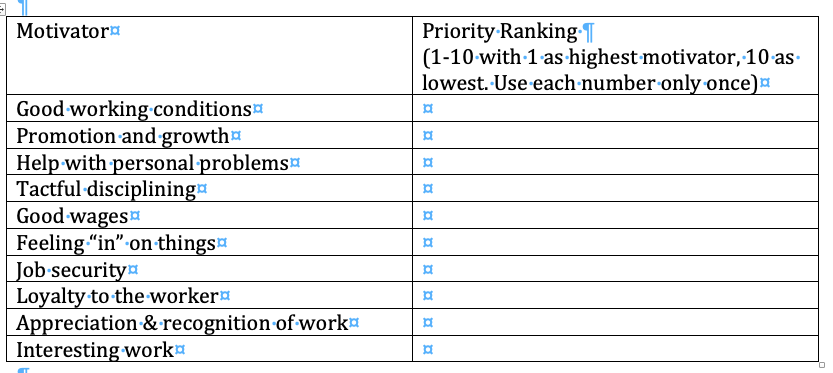
Even the biggest “carrot” can’t necessarily motivate staff. You need to find out what will. This picture is of the historical site of the Carrot Campaign, Port Hardy, British Colombia. Canada. It’s a symbol of government road building promises dangled in front of islanders since 1897 according to Wikipedia. (Photo by Diesel Demon http://www.flickr.com/photos/28096801@N05/3933107980/sizes/m/)
Do you know what motivates your employees?
Your employees should be grateful for their jobs, right? Satisfied? Motivated? But, they seem hesitant. It’s as if they’ve just put their heads down and are trying to bull their way through each day. How can you lead them if they aren’t motivated? You can’t.
What’s your Employee Leadership IQ? IQ as used here stands for Information Quotient. How’s yours when it comes to understanding and working with your staff? Leaders lead people; managers manage things. If you’re going to have a successful business, you have to lead successfully. To lead successfully, you want to hear and understand their priorities and motivators.
There are plenty of studies about understanding motivation. One of the most basic is the Ohio State University scholarly study (https://archives.joe.org/joe/1998june/rb3.php), a version of which I have used for years with everyone from police departments, to government employees, to small businesses. This 2020 blog from Smarp, the Top 15 employee motivation tips, has an excellent infographic that is worth studying. Jeff Miller’s 2017 article in Inc., 3 Important things you need to know about motivation, is more manager-focused than employee-focused but can be useful. The most useful research is to do your own. Keep reading for my recommendation.
However, it really comes down to really hearing what your employees have to say and responding to their needs and desires. One motivator doesn’t usually cover everyone because everyone is unique. There is one truth about motivated people, they motivate others. They motivate people to stay with you and new people to work for you.
Doubt this uniqueness? Want to measure your Leadership IQ? Here’s a simple and quick little experiment using the Employee Priority Motivator Tool™.
EMPLOYEE PRIORITY MOTIVATOR TOOL™

This list originally came from an informal class, Understanding and Working with People, offered at the The University of Texas at Austin but its origins go back even further to a study by James R. Lindner (https://archives.joe.org/joe/1998june/rb3.php). You may want to add to the list based on ideas from your employees, team leaders, or managers. I recommend you at least keep these 10.
Instructions.
- Using the tool above, rank each item from 1— 10 in terms of what you think are the motivating priorities of each employee.
- Then ask supervisors or managers to do the same thing.
- Finally ask each employee to rank the list for themselves. You can also ask them to rank the list for teammates.
- Now, compare what you thought, what supervisors thought, and what employees said about themselves and others.
There’s almost always a huge disconnect. When we have asked clients to do this, the owners, managers, and team leaders seem sure they know beforehand what motivates their employees. They are almost always surprised with what people say. Even in tough economic times, the employee motivator is not what they or you might expect.
If there isn’t a big difference in your results, congratulations! You’re on course to understanding and motivating your people. This will make leadership a lot easier. We are motivated by what will get us what we want (or value) within our unique timeline.
To get or keep employees motivated, keep checking. You also want to make sure they get what they need or show them that there’s real progress being made in that direction.
My final thought is: no matter what, take some action to find out what you need to do to motivate people. Don’t just jump in and hope you’ve got your employee motivation right. That’s a great way to waste a lot of money and effort.






